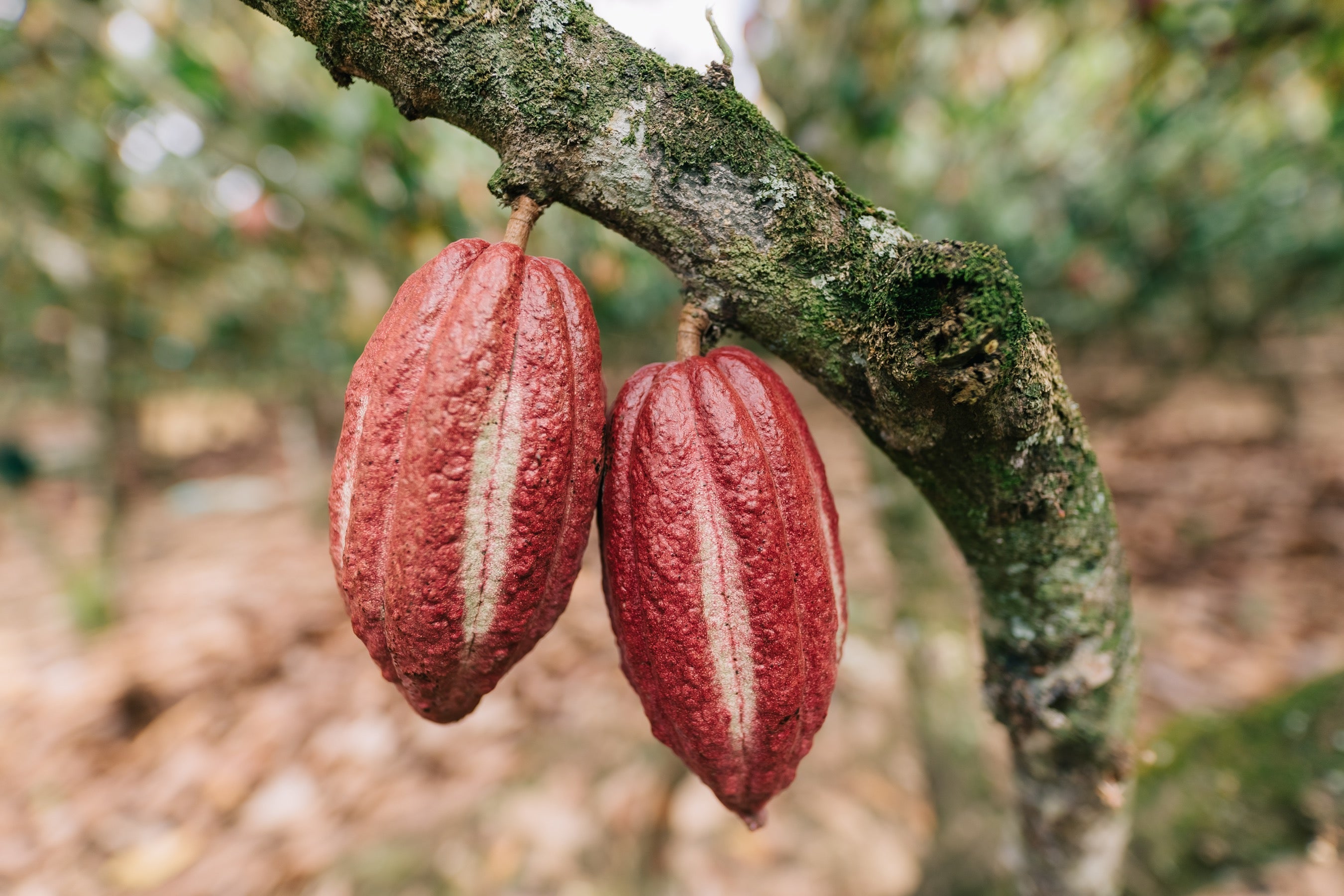The Philippines’ relationship with cacao has been long and intimate, something we can see from our love for the local sikwate and champorados.
 Young pods grow at one of the trees in our partner farms
Young pods grow at one of the trees in our partner farms
If there is anything we know for sure, it’s that Filipinos love chocolate. We enjoy it from our morning champorados to our afternoon sikwates. Even in local stores, there is an abundance of chocolate candies to choose from. It’s also a popular inclusion in the pasalubongs (souvenirs) of our relatives and friends from abroad. Undeniably, chocolate is a popular snack in the country - the Department of Trade and Industry even said that we consume 50,000 metric tons of it every year! [1]
But did you know that our relationship with chocolates dates back to more than 300 years ago?
In the mid-17th century, the fruit that chocolate is made from, the Theobroma Cacao, or simply called cacao, made its way to the country from Central America via the Manila-Acapulco Trade [2]. This made us the first country in Asia to grow and cultivate the crop. We are also located at an ideal location, falling at the cacao belt that is approximately 20° north and south of the equator, giving us a unique geographical advantage in its cultivation.

A visualization of the journey of cacao to the Philippines via the Manila-Acapulco Trade
But bringing cacao to the country was no easy task, especially back when sailing was the primary mode of transport and the travel time was longer. Since the beans of the cacao tree lose its ability to vegetate in just two weeks, the Spanish chose to bring a cacao seedling instead [3]. They had to keep this seedling alive for multiple weeks thus its successful arrival in the Philippines was a considerable achievement at that time. It was even believed to be Pure Criollo, one of the most prized varieties today.
When it comes to the story of how it propagated all over the country, there are multiple versions on where it started.
One of the most popular accounts comes from Historia de Filipinas written by the Spanish friar Fr. Gaspar San Agustin [4]. Agustin said that it was a naval pilot by the name of Pedro Brabo de Lagunas who brought cacao to the country. He gave this to a cleric in Camarines named Bartoleme Brabo who eventually entrusted it to a native named Juan de Aguila to nurture and cultivate. In some versions, they claim that Aguila actually stole the plant and distributed its fruits.
Meanwhile, Recollect monk Juan de la Concepcion [5] and Fr. Manuel Blanco [6] tells a different tale - they credit the introduction of the crop to a Jesuit Friar named Juan Davila from Cariga, Leyte. He is said to have requested Governor-General Diego Salcedo to bring the plant from Nueva España to Cariga, so he can teach the locals of the area to cultivate it.
Both accounts seem to point that cacao was first planted in Luzon or Visayas, possibly around the same time. Eventually, it began to spread all over the country with the help of the friars that distributed its seeds and seedlings to Filipinos. These are only the humble beginnings of the crop in the Philippines - its arrival marked the start of rich culture and tradition that we practice until today. In our next article, we will go further on how chocolate is consumed and cultivated throughout our history until today.
Written by: Ira Mendez
[1] Department of Trade and Industry. (N.A.). DTI, DA hold forum on strengthening the PH cacao industry. Retrieved August 26, 2021, from https://www.dti.gov.ph/archives/regional-archives/region-4a-news-regional-archives/dti-da-hold-forum-on-strengthening-ph-cacao-industry/
[2] Blanco, M., and Andrés, N. (1877). Flora de Filipinas. Manila: Plana.
[3] Clarence-Smith, W.G.. (2000). Cocoa and Chocolate, 1765 - 1914. Oxfordshire: Routledge.
[4] Lyon, W. (1902). Cacao Culture in the Philippines. Manila: Bureau of Public Printing; Project Gutenberg. Retrieved on November 04, 2020, from https://www.gutenberg.org/files/33921/33921-h/33921-h.htm
[5] Blair, E. (1911). The Philippine Islands, Vol. 47 (p. 219). Retrieved November 04, 2020, from https://quod.lib.umich.edu/p/philamer/afk2830.0001.047/223?q1=the+philippine+islands+vol+47
[6] Moreño, R. (2018, August 10). A short history of “Sikwate.” Retrieved from The Freeman on February 23,2021, from https://www.philstar.com/the-freeman/cebu-lifestyle/2018/08/10/1841282/short-history-sikwate
 Auro PH
Auro PH
 Auro BH
Auro BH

